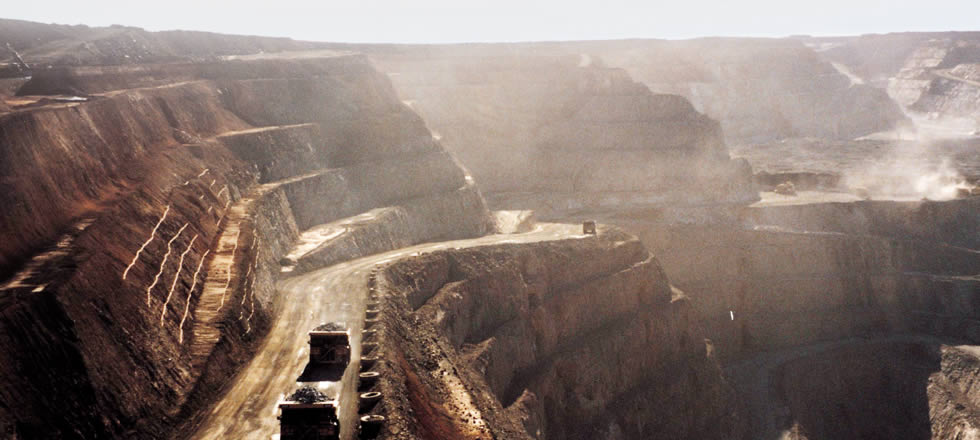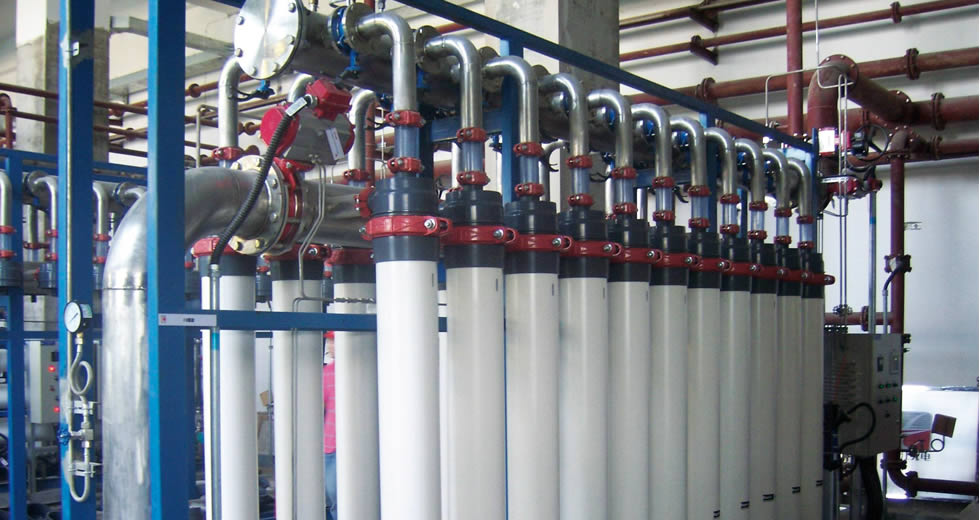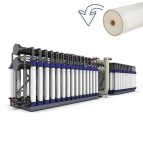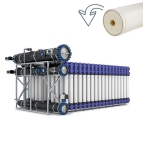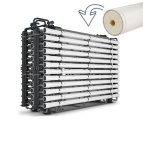CHALLENGES
Water is an important resource in the mining industry. Often, mines are faced with one or more of three critical challenges:
- Treatment of wastewater in areas with excess water
- Supply of process and potable water in areas with a scarcity of water
- Treatment of the wastewater resulting from mining processes, specifically to prevent or reduce Acid Mine Drainage (AMD)
All mining activities use water in production processes. In some regions, mines operate in semi-arid and even desert conditions, with no direct access to water supplies.
In many areas in Latin America and Southern Africa, the only available water source is sea water, often many miles away. This requires transport and desalination of seawater for mining processes. Coal and metal mining activities produce contaminated water high in sulphates and metals. This water is referred to as acid mine drainage. Increasingly restrictive legislation for usage and reclamation standards for wastewater means that mines are responsible for treating and reusing or disposing of this contaminated water properly.
If you have any questions, please contact us.
APPLICATIONS
All mining requires water, and often lots of it. From the water for separation processes to the drinking water in the showers and canteens, different applications require different qualities and, depending on the available feedwater, different treatment methods. Mining in dry regions will prompt a strong focus on economical use and reuse, while dewatering pits in wet regions will require attention for the environment. Worldwide, the industry is adopting the use of saline or other suboptimal sources, and recycled process water.
Responsible water management has to include preventing pollution accidents caused by acid mine drainage, metal contamination, or the discharge of wastewater with high levels of solids. Responding to water issues in different circumstances, and making use of technological advances, certain risks may well be turned into opportunities for reuse, or even better water for the locals or agricultural activities.
In many occasions mines operate with no direct access to water supplies. Transport and desalination of seawater is desperately needed for these mining processes. The X-Flow technologies can help the mining industry in the following ways:
- Pretreatment to seawater reverse osmosis (SWRO)
- Treatment of mining wastewater, including tailings and acid mine drainage
TREATMENT SOLUTIONS
Ultrafiltration technology already plays an important part in many mining operations across the globe, both in producing water to the required specifications, and in treating wastewater for safe discharge or reuse. With the value of water set to rise even further, along with concerns about resources, smart management needs smart technology not only from the business point of view. Pentair Advanced Filtration helps improve productivity and protect your equipment as well as the environment.
Metals recovery
X-Flow is involved in the development of UF technology for the recovery of mined resources from waste streams. Trials are currently underway for recovery of gold, copper and uranium.
Water treatment
X-Flow ultrafiltration (UF) technology is the preferred technology for pretreatment to seawater reverse osmosis (SWRO).
Wastewater treatment
X-Flow membranes are also valuable tools in the treatment of mining wastewater, including the treatment of tailings and acid mine drainage. The X-Flow Aquaflex module is the most widely used UF membrane in acid mine drainage treatment.
These capillary UF membranes serve as pretreatment to reverse osmosis (RO) systems on AMD plants producing water for industrial and domestic reuse from AMD.
FEATURED CASE
RELATED TECHNOLOGIES
Pentair X-Flow Aquaflex is the ultrafiltration solution for challenging feed water qualities with unmatched operational flexibility.
Pentair X-Flow X-line Solution is a cost-effective ready-to-assemble UF for water treatment and wastewater reuse applications.
Pentair X-Flow Xiga: Ideal solution for large-scale ultrafiltration applications in a small footprint.
